|
|
WORLD SHITO-RYU KARATEDO FEDERATION

4th SHITO-RYU KARATE-DO WORLD CHAMPIONSHIPS
Moscow, Russia - August 23-24, 2003
Information provided by Valeriy Dubinin (President of the Russian Shito-Ryu Karatedo Federation)
Moscow Today
Moscow
is one of the world’s largest megacities. Its population
was 10,500,000 people in October 2002, with the territory of
878,7 square kilometers. The boundary of Moscow (since 1960)
corresponds to the Moscow Ring road which is situated 17-21
kilometers away from the city centre.
Local
authorities are, since 1991, Moscow Mayoralty
and Moscow government.
In
terms of urban ecology, Moscow was claimed to be a very
clean city during the stagnation period. But recently, with
positive political changes, the real situation became known:
air and water pollution by chemicals is rather heavy,
especially in the southern and south-eastern parts of the
town. This is explained by the pattern of enterprises and by
the predominant winds. Moreover, information on radioactive
pollution is now available, and several strongly polluted
sites have been discovered. Unfortunately, they are
dispersed all over the territory of the town including its
public gardens and densely populated blocks of flats
("sleeping areas").
Location
and Climate
Moscow is located at 55.55'of
northern latitude and 37.37' to the east of the Greenwich's
meridian, in the centre of the East-European plain in the
zone of mixed forests. It is intersected by the Moscow
river, which takes a number of tributaries between the Oka
and the Volga. The largest of the tributaries are the Yausa
and Setun'.
There
is a folk saying about seven hills supporting Moscow. In
fact, hilly are only some parts of former Moscow area, and
the highest is the south-western part of the town.
Geographically, it is defined as Teplostanskaya upland; the
central and eastern parts of the town's area are more flat
and low, and its major part is occupied by the valley of the
Moscow river with its tributaries.
The
Moscow climate is moderately continental, although it is
colder than in other European cities. Temperature amplitude
is 28 C. The cool period of the year starts on September, 29
and ends on May, 10. Normally, the rainfall ranges within
540-650mm per year. The rainy period lasts from April to
October. An estimated duration of the severe snow period is
from November, 26 to April, 11. The height of the snow cover
reaches 35 cm in the end of winter. Atmospheric pressure,
which doesn't strongly change during the year, is 747mm.
Winds in Moscow may blow in any direction, but during
periods of warm weather the north-western ones prevail,
while the south-western winds are proper to cool seasons.
Weather
is rather unstable in Moscow, and the weather forecast
service is the most common object for jokes. One of possible
reasons justifying not quite reliable forecasts is
considerable temperature amplitude between parts of Moscow,
which may reach 10 C in spring or autumn.
People
and language
More
than 8mln people are living in Moscow, and more than 11mln
in Moscow with its suburbs. Initially, Russians
predominated, and this is true now as well, although there
are some changes in proportions between Russians, Tatars,
Jews and people from the Caucasus republics. Muscovites by
birth are not so numerous now. Christianity is a predominant
religion in Moscow. Russian Orthodox Church is most popular,
other religious societies are active: Moslems, Protestants,
Old-believers, Single-believers, Judaism. Each religious
confession has its own church, or synagogue, or any other
house for praying, as well as a school and publishing house.
ct "pure" language.
Moscow,
capital of Russia, is one of the most strange, miraculous
and beautiful cities in the world. It has a European
character incredibly mixed together with unforgettable
features of old Russian city, keeps traces of all major
events of Russian history and leaves no one indifferent.
What
to see in Moscow:
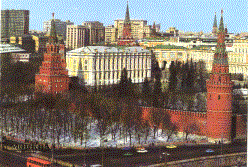
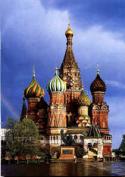
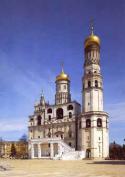
Kremlin
St.Bathil's Cathedral The
Kremlin Panorama
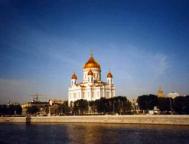
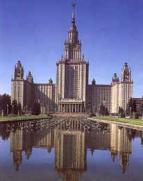
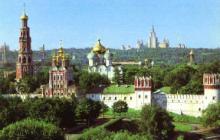
Сathedral of Christ the Savior, The Moscow University New Maidens Convent
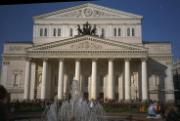
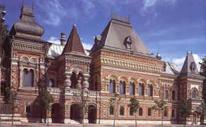
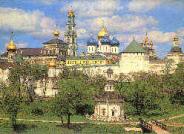
Bol’shoy Theater
Moscow Archeological museum.
Sergiev
Posad